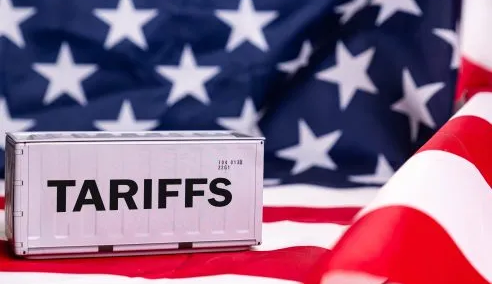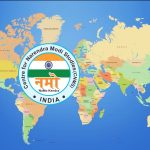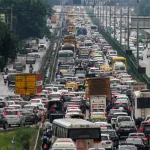The imposition of increased tariffs on Indian goods by the United States has far-reaching consequences that extend beyond mere trade barriers. It is a move that not only affects the exporters and manufacturers in India but also has a significant impact on the inflationary trends within the country.
With India being a major player in global trade, any shift in its export dynamics due to external trade policies results in a chain reaction, influencing domestic pricing, production costs, and overall economic stability.
The decision by the United States to impose higher tariffs on Indian goods stems from various economic and political considerations. Protectionist policies have been a hallmark of recent global trade trends, with nations seeking to shield their domestic industries from external competition.
By raising tariffs, the U.S. government aims to discourage imports and promote local production, thereby addressing trade imbalances and supporting its industries. However, such measures come at a cost, particularly for trade partners like India, whose exports to the U.S. contribute significantly to its economy.
Indian exporters, particularly those dealing in textiles, pharmaceuticals, machinery, and agricultural products, bear the brunt of these increased tariffs. Higher duties mean that Indian goods become less competitive in the U.S. market, as American importers look for alternative suppliers offering lower prices.
This shift leads to a reduction in demand for Indian products, which in turn affects the revenues of Indian businesses. For small and medium enterprises (SMEs) that rely heavily on exports, this could translate into financial distress, potential layoffs, and even closures.
The ripple effect of reduced exports is felt in domestic markets as well. With declining foreign demand, manufacturers may divert their products to the local market, causing supply fluctuations. However, the increased costs of production—due to higher input prices and reduced economies of scale—could result in price hikes.
For instance, if textile exports decline, domestic cloth prices may not necessarily become cheaper, as manufacturers still need to recover costs. Similarly, in the pharmaceutical sector, where India is a major supplier to the U.S., the impact of reduced exports may lead to decreased revenues for pharmaceutical firms, which could ultimately affect research, production, and pricing within India itself.
Inflation in India is directly linked to the dynamics of supply and demand, both at the domestic and global levels. When exports decline due to tariffs, the Indian rupee could face depreciation against the U.S. dollar, as lower foreign exchange earnings impact the currency’s value.
A weaker rupee makes imports more expensive, further fueling inflation. India relies heavily on imported crude oil, machinery, and technology, all of which become costlier with a depreciating currency. The increased cost of oil alone has a cascading effect, as it raises transportation and logistics expenses, affecting the prices of essential commodities such as food grains, vegetables, and consumer goods.
Another critical aspect of inflation due to tariff imposition is the disruption of supply chains. Many Indian manufacturers depend on imported raw materials and components, particularly in industries like electronics and automobile manufacturing. When their costs rise due to a weaker rupee, the final product prices also increase, leading to inflationary pressure on consumers. The middle-class and lower-income groups, who are already grappling with the effects of price volatility, find themselves particularly vulnerable to such economic fluctuations.
The Indian government has limited but crucial options to counter these effects. One immediate response could be negotiations with the U.S. administration to seek tariff relaxations or trade incentives. Diplomatic efforts, coupled with strategic trade agreements, can help in mitigating the adverse effects of such protectionist policies.
At the same time, India could look towards diversifying its export destinations to reduce dependence on the U.S. market. Strengthening trade ties with European, African, and Southeast Asian nations can provide alternative avenues for Indian goods, ensuring that export revenues do not decline drastically.
On the domestic front, policy measures aimed at supporting exporters and manufacturers become imperative. Providing subsidies, tax benefits, and financial assistance to industries affected by tariff hikes can help sustain businesses and prevent job losses.
Additionally, encouraging domestic consumption through incentives and infrastructural support can help absorb excess supply, thereby stabilizing prices. Investment in technology and innovation can also play a role in making Indian products more competitive, reducing reliance on specific markets, and fostering resilience against external trade shocks.
Beyond immediate economic measures, the long-term strategy should focus on reducing inflationary vulnerabilities. Strengthening the manufacturing sector, promoting self-reliance in critical industries, and enhancing domestic supply chains are crucial steps.
The government’s ‘Make in India’ initiative can play a pivotal role in this regard by encouraging local production and reducing dependence on foreign imports. If India can develop a robust industrial base with efficient production mechanisms, it will be better positioned to withstand external trade pressures without significant inflationary consequences.
The impact of U.S. tariff hikes on Indian goods is not just a matter of trade imbalance; it is an issue that affects the daily lives of millions of Indians. Rising prices, currency fluctuations, and economic uncertainty create challenges for consumers, businesses, and policymakers alike.
While immediate responses are necessary to manage the short-term effects, a well-planned economic strategy focused on diversification, self-reliance, and competitive industrial growth is essential for long-term stability. The evolving global trade landscape demands adaptability, and India must navigate these challenges with a balanced approach that safeguards its economic interests while fostering sustainable growth.
(Author is RK Columnist and can be reached at: [email protected])








